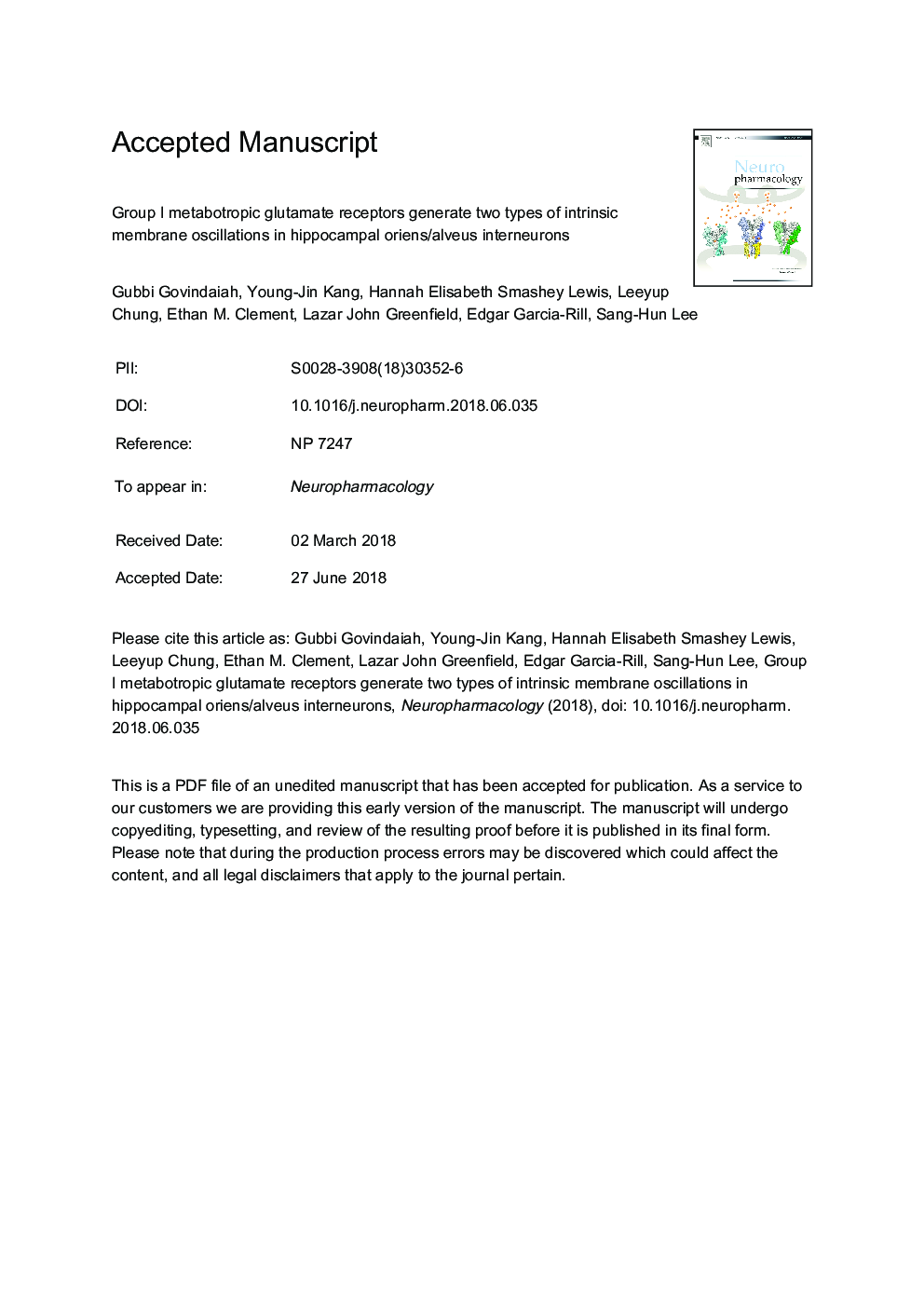| Article ID | Journal | Published Year | Pages | File Type |
|---|---|---|---|---|
| 8516338 | Neuropharmacology | 2018 | 43 Pages |
Abstract
GABAergic interneurons in the hippocampus are critically involved in almost all hippocampal circuit functions including coordinated network activity. Somatostatin-expressing oriens-lacunosum moleculare (O-LM) interneurons are a major subtype of dendritically projecting interneurons in hippocampal subregions (e.g., CA1), and express group I metabotropic glutamate receptors (mGluRs), specifically mGluR1 and mGluR5. Group I mGluRs are thought to regulate hippocampal circuit functions partially through GABAergic interneurons. Previous studies suggest that a group I/II mGluR agonist produces slow supra-threshold membrane oscillations (<0.1â¯Hz), which are associated with high-frequency action potential (AP) discharges in O-LM interneurons. However, the properties and underlying mechanisms of these slow oscillations remain largely unknown. We performed whole-cell patch-clamp recordings from mouse interneurons in the stratum oriens/alveus (O/A interneurons) including CA1 O-LM interneurons. Our study revealed that the selective mGluR1/5 agonist (S)-3,5-dihydroxyphenylglycine (DHPG) induced slow membrane oscillations (<0.1â¯Hz), which were associated with gamma frequency APs followed by AP-free perithreshold gamma oscillations. The selective mGluR1 antagonist (S)-(+)-α-Amino-4-carboxy-2-methylbenzeneacetic acid (LY367385) reduced the slow oscillations, and the selective mGluR5 antagonist 2-methyl-6-(phenylethynyl)pyridine hydrochloride (MPEP) partially blocked them. Blockade of nonselective cation-conducting transient receptor potential channels, L-type Ca2+ channels, or ryanodine receptors all abolished the slow oscillations, suggesting the involvement of multiple mechanisms. Our findings suggest that group I mGluR activation in O/A interneurons may play an important role in coordinated network activity, and O/A interneuron vulnerability to excitotoxicity, in disease states like seizures, is at least in part due to an excessive rise in intracellular Ca2+.
Keywords
HEPES(S)-(+)-α-Amino-4-carboxy-2-methylbenzeneacetic acidLY 3673852-aminoethoxydiphenylborateCGP55845SR95531ACPD2-APBMPEPNBQXmGluRAPVN-methyl-d-aspartateDHPGDICFFAAMPAaCSFNMDATTX(S)-3,5-dihydroxyphenylglycine1,2-bis(2-aminophenoxy)ethane-N,N,N′,N′-tetraacetic acid2-methyl-6-(phenylethynyl)pyridine hydrochloride2-amino-5-phosphonopentanoic acid4-(2-hydroxyethyl)-1-piperazineethanesulfonic acidα-amino-3-hydroxy-5-methyl-4-isoxazolepropionic acidflufenamic acidexcitotoxicityBAPTAtetrodotoxinSeizuresartificial cerebrospinal fluidaction potentialTRP channelsdifferential interference contrastMetabotropic glutamate receptorsMetabotropic glutamate receptor
Related Topics
Life Sciences
Neuroscience
Behavioral Neuroscience
Authors
Gubbi Govindaiah, Young-Jin Kang, Hannah Elisabeth Smashey Lewis, Leeyup Chung, Ethan M. Clement, Lazar John Jr., Edgar Garcia-Rill, Sang-Hun Lee,
